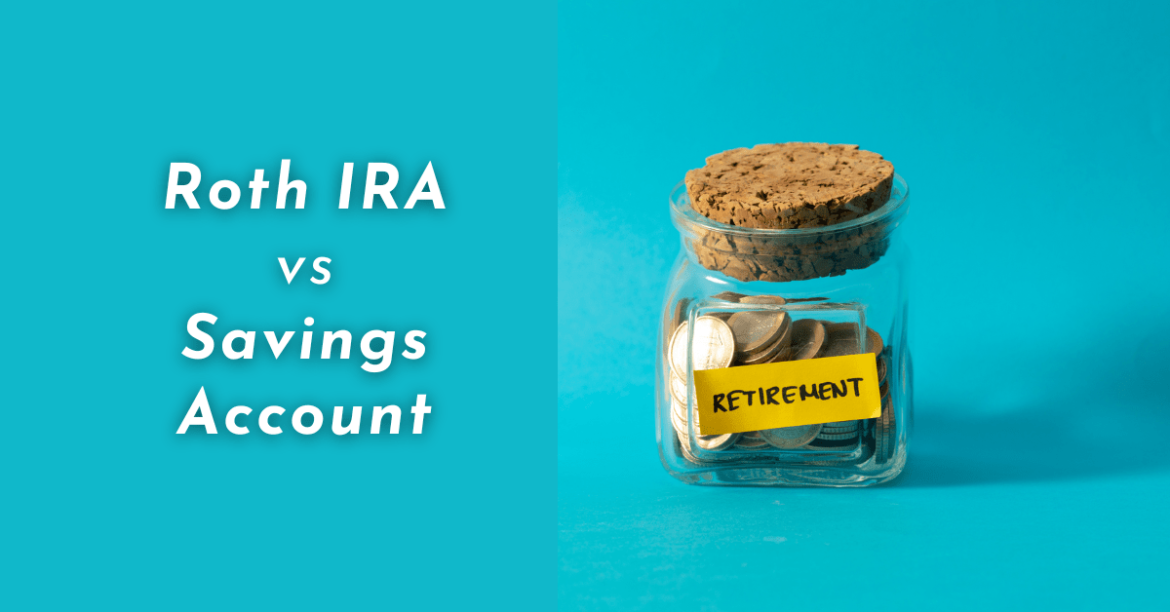Safeguarding your retirement through smart financial decisions is a stepping stone for many older adults! In the United States, there are numerous retirement savings plans (including housing options) to make a senior living transition for older adults a seamless experience.
And today, we are here to talk about one such savings plan, which has been a compelling debate among older adults. Today, we will discuss the battle between a savings account vs. Roth IRA.
Why savings for retirement is important
Retirement symbolizes a new beginning in life. But as we advance into that chapter of life, we may find that it can be a complex undertaking! Why? Just think of the socio-economic situation the world is in right now and imagine how tougher it will get in the future (with inflation and rising costs of healthcare).
That’s why building a healthy retirement fund ensures you can maintain your senior lifestyle even after leaving the workforce. Let us examine why saving and investing is vital to achieving this lifestyle.
1. Financial independence
Building a secured retirement fund gifts you the freedom to maintain your desired lifestyle and cover essential expenses without solely putting your faith on Social Security or other sources of income.
2. Inflation protection
The cost of living will (and continues to) increase over time due to inflation. This natural economic situation has a domino effect that will affect retirement. A dedicated retirement savings fund helps safeguard your purchasing power and ensures you can maintain a decent living during retirement.
3. Healthcare expenses
With inflation, healthcare costs will also grow. And retirement often comes with increased healthcare requirements. Sufficient savings can help cover medical costs and long-term care (especially in home care), ensuring you have the necessary funds to maintain good health.
4. An early retirement
A full-bodied retirement saving plan will allow you to retire if desired. Many people even take out loans to achieve this dream of an early retirement. This can give you more time to enjoy your passions and make golden moments out of your retirement.
5. Legacy planning
Saving for retirement allows you to leave behind a robust financial legacy for your loved ones or support even charitable causes.
6. Unforeseen circumstances
Life can be very unpredictable, and we do mean very! Why? Just look at 2019, the coronavirus’s spread, and the global pandemic’s beginning. Who factored this into their retirement plans, right? Having a well-funded retirement account is a safety net during challenging times.
7. Peace of mind
And lastly, knowing you have a secured financial future can reduce stress levels and anxiety, allowing you to focus on enjoying your retirement years with your loved one(s)!
Traditional savings account
A traditional savings account is a basic bank account where you can deposit money and earn interest.
This account is an essential and straightforward method of setting aside funds for the future. It can be for retirement or a holiday excursion you have been planning! Banks and credit unions generally offer it, and while it provides a safe place to store money, its returns are typically minimal.
This means that the interest rates are usually low. The interest earned from a savings account is subject to taxation, potentially reducing the overall maturity of your savings over time. That is where a Roth IRA steps in.
What is a Roth IRA?
A Roth IRA is a unique retirement account that allows older adults to save and invest for their senior living phase. A Roth IRA ( also known as an Individual Retirement Account) is a dedicated retirement savings vehicle with distinctive advantages over traditional savings accounts. And one of them is a unique tax advantage, as contributions are made with after-tax money.
This means you don’t get an instant tax deduction for the money you put in. The earnings grow tax-free, and qualified (there are rules and regulations) withdrawals in retirement are also tax-free.
Example: You contribute $5,000 from your earnings to a Roth IRA, and gradually, your investment will grow over time. Meaning your initial contribution will increase to $10,000. When you retire and withdraw that $10,000, you won’t owe any taxes on the earnings, as it has already been taxed when you contributed.
Suppose you are considering being a resident of an independent living setting during your retirement phase or even a nursing home. In that case, a ROTH IRA is an ideal retirement savings account! As your matured savings won’t be taxed during your golden years.
Paying for retirement
Savings is essential no matter how you look at it, and when edging into the golden years is just years away, it is best to ensure a financially secured retirement!
Senior living care types like assisted living or memory care are vastly different regarding cost, as the level of services will vary. So if you are interested, read below to understand how to pay your way into secured retirement!
Roth IRA vs. savings account
Now that we know the difference between the two let us take a look at the three crucial elements that stands out when comparing a Roth IRA to a traditional savings account:
1. Tax treatment: The contributions to a Roth IRA are after-tax, while the interest earned in a savings account is subject to taxation. This fundamental difference impacts the growth potential of your savings.
2. Withdrawals: With a savings account, you can withdraw funds without restrictions. However, early withdrawals from a Roth IRA may incur penalties unless you meet exceptions (as per institutional regulations).
3. Investment opportunities: A Roth IRA offers a more extensive range of investment options than a traditional savings account. With a Roth IRA, you can invest in stocks, bonds, and mutual funds. This could lead to higher returns over the long term.
Is a Roth IRA better than a savings account?
Now it depends on three things; your patience, financial goals, and your unique circumstances. A Roth IRA is more beneficial if you expect your tax rate to be higher during retirement than now. Also, tax-free withdrawals during retirement can considerably enhance your savings’ growth prospectively.
On the other hand, a savings account might be more suitable for a short-term goal or as an alternative fund due to its easy accessibility and safety. But there is another contender in the mix, which is known as a high-yield savings account.
High-yield savings account vs. Roth IRA
A high-yield savings account is better (with a much higher interest rate) than a regular one. It allows you to earn more money on your savings over time.
Example: Suppose you deposit an amount of $1,000 into a high-yield savings account with an annual interest rate of 2.5%. After a year, you would earn $25 in interest, and your account balance would be $1,025.
Final thoughts
There is no correct answer in the debate of which is better, a savings account, a Roth IRA, or high-yield savings. Each options have their respective merits. But if you had to choose, especially with your retirement years on the horizon, then it is best to go with a Roth IRA.
Irrespective of the chosen route, the most critical aspect is saving and investing early, allowing your savings to work for you and compound over time. And if you want to supplement your savings plan with more financial strategies, then read below!
FAQs
Is it better to put money in savings or a Roth IRA?
The answer truly depends on your financial goals and timeline. A Roth IRA might be more profitable (in the long run) if you seek tax-free withdrawals during retirement. But you have to be able to handle the contribution constraints. A savings account could be more suitable if you need flexibility and easy access to funds.
Is an IRA better than a savings account?
If you are considering long-term benefits, an IRA is a much better and more essential alternative to a savings account. Similarly, high-yield savings vs. Roth IRA can give you a clearer picture of a better savings account.
Is it smart to use a Roth IRA as a savings account?
A Roth IRA is a form of altered savings account. It can be a healthy retirement savings method due to its tax-free withdrawals and potential for higher returns. But due to rules and regulations that come with a Roth IRA, you have to be able to use it as a long-term saving.
Is an IRA a savings account?
An IRA (Individual Retirement Account) is not a traditional savings account. While both accounts involve saving or putting aside a fund for the future, they serve different purposes and have distinct features. The true benefit lies in tax-free withdrawals during retirement.

